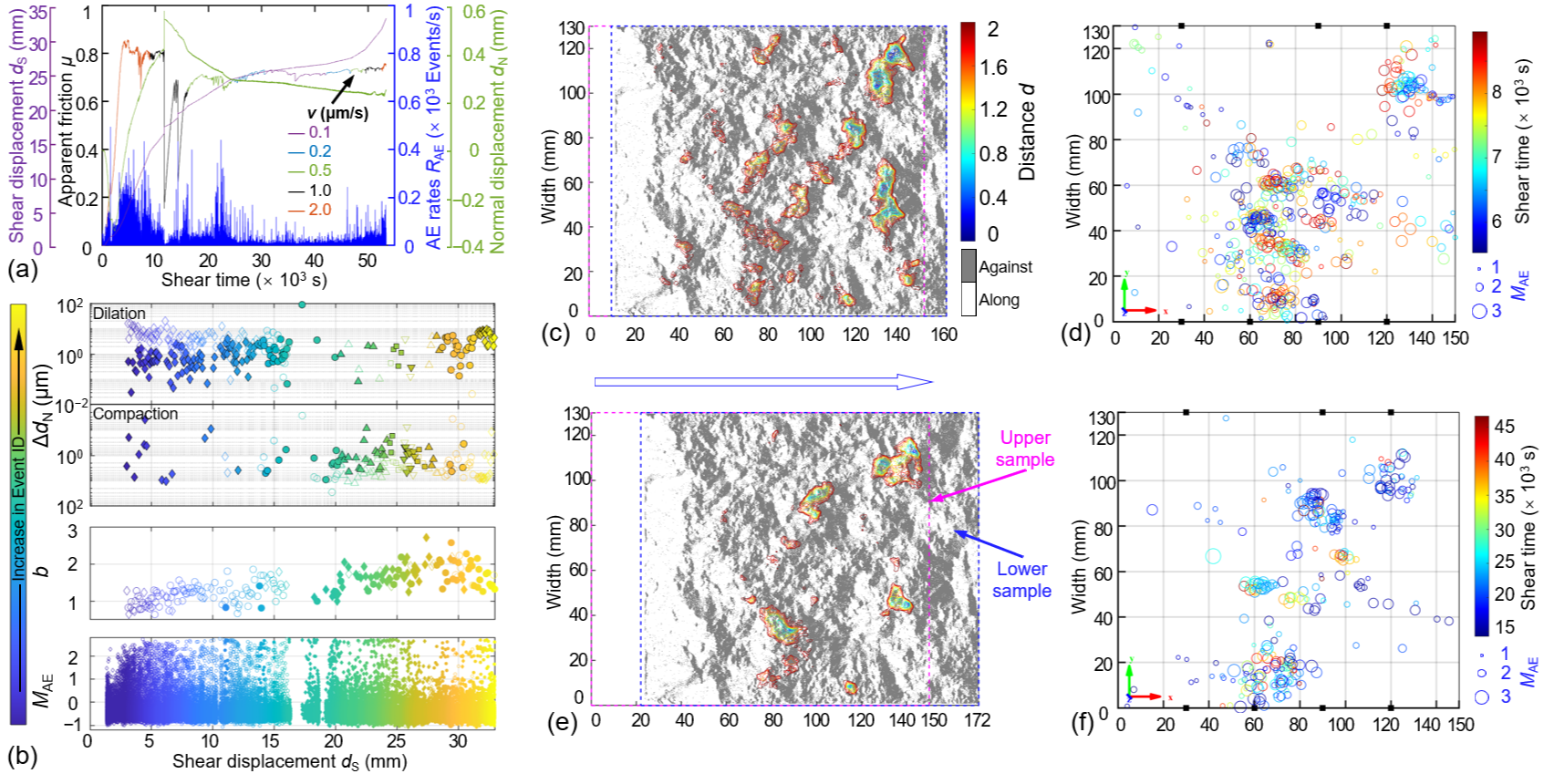Effects of fault roughness on dilatancy behavior
In the stick phases, dilatancy behavior inferred from the asperity contacts agrees well with the variation of normal displacement. The locations of acoustic emission (AE) events are also consistent with the potential surface damage regions estimated from the evolution of asperity contacts at various shearing displacements. Stick-slip events with compaction-dominant interseismic slip usually occur at large shear displacements on interlocking faults when overriding high asperities. In those stick-slip events, the proportion of large-magnitude AEs is lower, resulting in higher Gutenberg–Richter b values. A generalized schematic model is also proposed for the complex dilatancy behavior during stick-slip cycles.

Video, Click here to view via OneDrive
Contact evolution in GS02
Related paper:
- Chai S, Su B, Zou Y, Zhao Q. Fault roughness and contact evolution control the dilatancy and compaction during shear sliding.
